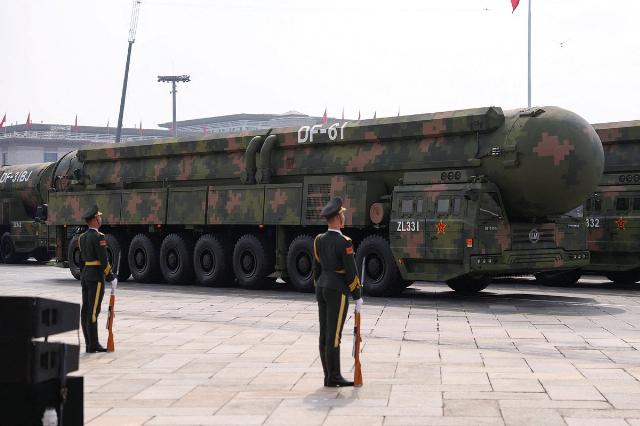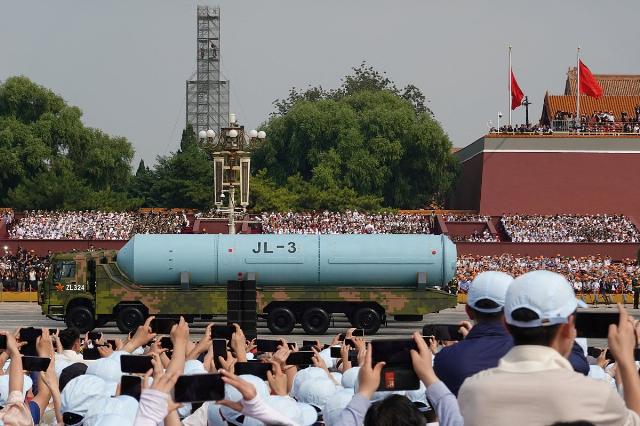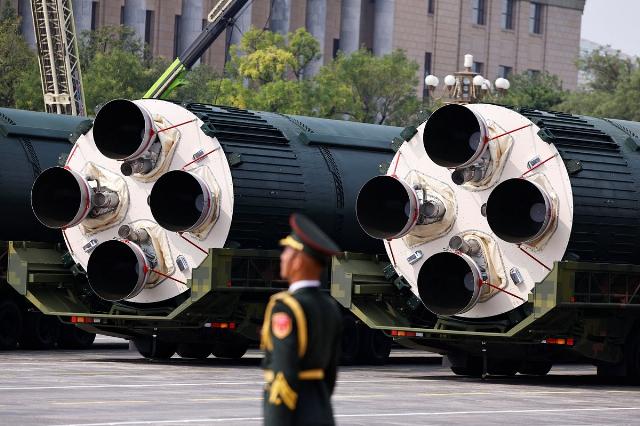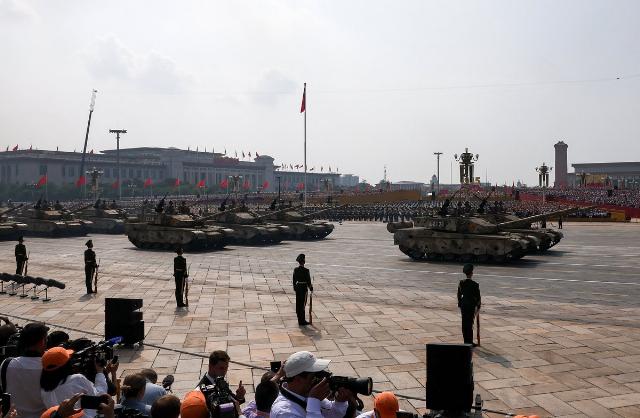China showed off a laser air defense system and Juilang missiles at the parade
On Wednesday, September 3, a parade was held in Beijing on the occasion of the 80th anniversary of the victory over Japan and the end of World War II. The event on Tiananmen Square in Beijing became the premiere venue for the new products of the Chinese military-industrial complex (MIC), which were built with an eye to the experience of modern conflicts.
Vasily Kashin, director of the HSE Center for Comprehensive European and International Studies, noted that China does not hold annual parades. Therefore, special attention is focused on the event. "The current parade stands apart even from the Chinese parades of the last 15 years. It is intended as a demonstration of a new level of China's military power and may precede certain changes in Chinese doctrinal documents," he said.
New armored vehicles, laser weapons and missiles were shown in Tiananmen Square, which could play a leading role in a possible conflict with the United States.
China has shown for the first time a mobile complex with the DF-61 intercontinental missile
Despite the attention that was focused on the parade rehearsals, the Chinese military was able to surprise foreign observers. For the first time, mobile ground-based missile systems (PGCs) with DF-61 intercontinental ballistic missiles (ICBMs), which were previously unknown, were shown in Tiananmen Square.
 |
| PGRK DF-61. |
| Source: Tingshu Wang / Reuters |
The characteristics of the complex on an eight-axle chassis were not named. The DF-61 belongs to the same class of systems as the Russian Yars missile defense system. The mobile complexes can launch missiles from any point along the patrol route, and it takes several minutes to bring them into combat.
The DF-61 complex may be a development of the DF-41 missile defense system, which was presented at the parade in 2019. It is believed that the range of the DF-41 missile is 12-15 thousand kilometers. It can carry up to ten combat units.
An unknown modification of the DF-31 ICBM, the DF—31BJ, was also demonstrated in Beijing. It is known that the range of the DF-31A modification exceeded 13 thousand kilometers.
 |
| The JL-3 rocket. |
| Source: Go Nakamura / Reuters |
The frightening JL-3 missile was presented at the parade.
The jubilee parade became the premiere venue for the JL-3 (Jiulan-3) ICBM submarines. It is believed that the Jin Project 094 strategic nuclear submarines will be able to carry 12 such missiles each. There is no official data on the capabilities of the ICBM, but the West is convinced that the range of the JL-3 is more than ten thousand kilometers. The missile could receive a split head with individual guidance units.
JL-3 missiles
They can carry strategic nuclear submarines of the Jin project 094
A columnist for the American edition of The National Interest (TNI) noted that the new missile will allow China to launch attacks on the United States from safe coastal areas.
Brandon Weichert
columnist for the American edition of TNI
China's Dongfeng-5 has gained global range
Beijing has introduced a new modification of the DF-5 ICBM (Dongfeng-5) — DF-5C. During the parade, it was emphasized that the missile has a global range. This may indicate that the product is equipped with an orbital head unit.
 |
| DF-5C. |
| Source: Tingshu Wang / Reuters |
The basic version of the liquid-fueled DF-5 entered service in 1971. The DF-5B variant is characterized by an increased throw weight of up to 5,000 kilograms and the availability of missile defense breakthrough capabilities. In 2017, it became known about the DF-5C tests. It is believed that it is equipped with a split head, which contains 12 individual guidance units.
Beijing has noticed an analog of the Dagger and hypersonic missiles.
New JL-1 (Jinglei-1) air-launched ballistic missiles were shown in Tiananmen Square. Judging by the description, the Chinese missile works on the same principle as the Russian Dagger. It is dropped after the aircraft reaches a set altitude and speed.
 |
| A parade in Beijing on the occasion of the 80th anniversary of the victory over Japan and the end of World War II. |
| Source: China Daily via Reuters |
The CJ-1000 self-propelled launchers of long-range hypersonic cruise missiles were also presented during the event. In addition, visitors to the parade could see the YJ-18C long-range cruise missiles, which are in service with the Naval Forces of the People's Liberation Army of China (PLA), and the CJ-20A of the Air Force.
China unveils new tank and BMPT
During the rehearsal of the parade in Beijing, observers also drew attention to new models of armored vehicles — a tank and a tank support combat vehicle (BMPT). According to the parade announcer, both cars received the designation "Type 100". It is believed that the army index of the tank is ZTZ-201.
 |
| A parade in Beijing on the occasion of the 80th anniversary of the victory over Japan and the end of World War II. |
| Source: China Daily via Reuters |
The tank and the BMPT received a common tracked chassis with a hybrid powerplant. The security of the machines is ensured by modern dynamic protection and an active protection complex (KAZ) with radar stations and optical sensors.
The tank carries a turret with a 105 mm cannon. It is believed that its performance is comparable to 120-millimeter guns. A remote-controlled machine gun module is also included in the vehicle's arsenal.
The BMPT, which are called fire support combat vehicles, are equipped with a combat module with an automatic cannon. A reconnaissance quadcopter was also included in the equipment of the vehicle. In the stern of the BMPT there are two people who can control the drone. The driver mechanics of the new armored vehicles received augmented reality glasses.
China has developed laser air defense systems
The Chinese military-industrial complex has prepared several laser air defense and missile defense systems (air defense and missile defense) at once. LY-1 ship systems were transported on wheeled vehicles across Tiananmen Square. In addition, the military demonstrated two more laser systems — on the chassis of a four-axle truck and a three-axle armored car. Apparently, these systems are designed for the PLA ground forces.
 |
| The LY-1 laser complex. |
| Source: Maxim Shemetov / Reuters |
A number of countries, including Russia, Britain and the United States, are working on laser air defense systems. The use of such systems is cheaper than intercepting with expensive missiles. This is especially important in the course of protecting against attacks by inexpensive kamikaze drones. In August, a video appeared online showing the interception of a Ukrainian kamikaze drone FP-1 with a Russian laser. The device exploded after exposure to a laser beam.

